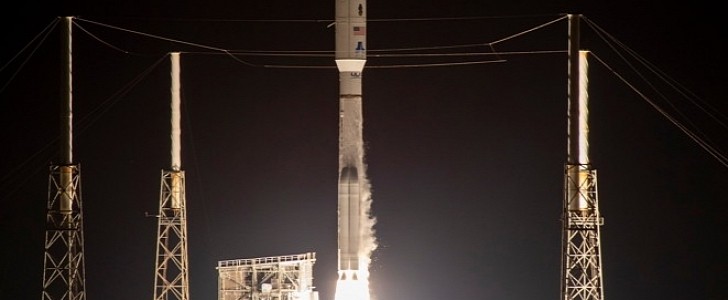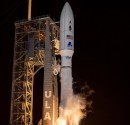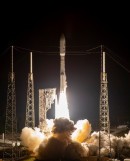On December 7th, an Atlas V rocket lifted off from Cape Canaveral Space Force Station as part of the U.S. Space Force's Space Test Program 3 (STP-3) mission. The rocket carried crucial payloads for NASA and the U.S. Space Force into Earth's orbit, marking the longest duration mission completed by the United Launch Alliance.
On Tuesday morning, at 5:19 a.m. EDT an Atlas V 551 configuration rocket blasted off into space from Florida. The spacecraft mated to the rocket was wrapped in a 17.7-ft (5-m) diameter fairing that kept the precious cargo safe during the voyage.
Initially, the mission was scheduled to take off on December 5th. However, it was postponed due to a leak in the ground system that stores rocket propellant. With everything fixed, the Atlas V successfully took two satellites to an orbit located at more than 20,000 miles (~ 32,000 km) above Earth.
The satellites carried several payloads for the U.S. Space Force, which include the Space and Atmospheric Burst Reporting System 3, an operational mission from the National Nuclear Security Administration, and space weather and situational awareness technologies for the Department of Defense Space Experiments Review Board.
There were also some science payloads for NASA on board, such as the Communication Relay Demonstration or LCRD, which is set to test a two-way laser relay communications system. The LCRD will send and receive data over invisible infrared lasers, speeding up data-transfer rates.
Another NASA payload is the Ultraviolet Spectro-Coronagraph Pathfinder (UVSC Pathfinder), a collaborative experiment with the Naval Research Lab that analyzes the origins of the Sun's most harmful radiation.
To date, United Launch Alliance has successfully completed 147 missions. STP-3 was the company's longest mission, lasting seven hours and ten minutes until the spacecraft separated from the rocket. The next mission for the U.S. Space Force, the USSF-8, is scheduled to launch from Cape Canaveral Space Force Station on January 21st, next year.
Live coverage of the STP-3 mission was provided by United Launch Alliance. In case you missed it, you can watch the launch in the clip down below.
Initially, the mission was scheduled to take off on December 5th. However, it was postponed due to a leak in the ground system that stores rocket propellant. With everything fixed, the Atlas V successfully took two satellites to an orbit located at more than 20,000 miles (~ 32,000 km) above Earth.
The satellites carried several payloads for the U.S. Space Force, which include the Space and Atmospheric Burst Reporting System 3, an operational mission from the National Nuclear Security Administration, and space weather and situational awareness technologies for the Department of Defense Space Experiments Review Board.
There were also some science payloads for NASA on board, such as the Communication Relay Demonstration or LCRD, which is set to test a two-way laser relay communications system. The LCRD will send and receive data over invisible infrared lasers, speeding up data-transfer rates.
Another NASA payload is the Ultraviolet Spectro-Coronagraph Pathfinder (UVSC Pathfinder), a collaborative experiment with the Naval Research Lab that analyzes the origins of the Sun's most harmful radiation.
To date, United Launch Alliance has successfully completed 147 missions. STP-3 was the company's longest mission, lasting seven hours and ten minutes until the spacecraft separated from the rocket. The next mission for the U.S. Space Force, the USSF-8, is scheduled to launch from Cape Canaveral Space Force Station on January 21st, next year.
Live coverage of the STP-3 mission was provided by United Launch Alliance. In case you missed it, you can watch the launch in the clip down below.







